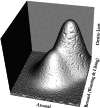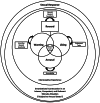Sexual Pleasure Matters - and How to Define and Assess It Too. A Conceptual Framework of Sexual Pleasure and the Sexual Response
- PMID: 38595929
- PMCID: PMC10903685
- DOI: 10.1080/19317611.2023.2212663
Sexual Pleasure Matters - and How to Define and Assess It Too. A Conceptual Framework of Sexual Pleasure and the Sexual Response
Abstract
Objective: Sexual pleasure is central to current understandings of sexual function, health, and wellbeing. In this article, we suggest that we lack a sufficiently specific, yet encompassing, definition of sexual pleasure and that we therefore lack comprehensive assessments of sexual pleasure. We introduce a definition of sexual pleasure and position it centrally in an adapted framework of the sexual response. In the framework, we include a taxonomy of rewards which can be retrieved from sex and thereby aim to capture the multifaceted nature of sexual pleasure.
Methods/results: Through narrative review, we arrive at the definition, framework, and taxonomy by integrating theories of sexual motivation and response with the literature on sexual pleasure and basic rewards. We position this literature within theories of affect and personality which allows us to differentiate between the experience of and the tendency to experience sexual pleasure (i.e., state versus trait sexual pleasure). We discuss how this conceptualization of sexual pleasure could be reflected in self-report assessments to quantitatively assess sexual pleasure.
Conclusions: The framework may aid to understand the role of the diverse facets of sexual pleasure in sexual function, health, and wellbeing and contribute to giving sexual pleasure the center position it deserves in sex research and therapy.
Keywords: Sexual pleasure; psychometrics; sexual response; state and trait; taxonomy.
© 2023 The Author(s). Published with license by Taylor & Francis Group, LLC.
Conflict of interest statement
The authors report no conflict of interest. Ellen Laan contributed to the conception and writing of the first version of this article and the conception of the first revision. Earlier versions of the article can be found at https://osf.io/3z6eq/. We pursued the revisions of this article in honor of Ellen Laan and everything we had the privilege and pleasure to learn from her.
Figures





Similar articles
-
Trauma-Informed Sex Positive Approaches to Sexual Pleasure.Int J Sex Health. 2021 Sep 24;33(4):537-549. doi: 10.1080/19317611.2021.1961965. eCollection 2021. Int J Sex Health. 2021. PMID: 38595781 Free PMC article.
-
Pleasure please! Sexual pleasure and influencing factors in transgender persons: An ENIGI follow-up study.Int J Transgend Health. 2022 Jan 31;24(2):212-224. doi: 10.1080/26895269.2022.2028693. eCollection 2023. Int J Transgend Health. 2022. PMID: 37114112 Free PMC article.
-
A Rapid Review of Sexual Pleasure in First Sexual Experience(s).J Sex Res. 2021 Sep;58(7):850-862. doi: 10.1080/00224499.2021.1904810. Epub 2021 Apr 19. J Sex Res. 2021. PMID: 33871295 Review.
-
The stepwise development of an interactive web-based sex education programme for subfertile couples: the Pleasure & Pregnancy programme.Hum Reprod. 2020 Aug 1;35(8):1839-1854. doi: 10.1093/humrep/deaa106. Hum Reprod. 2020. PMID: 32649754
-
Sexual health, sexual rights and sexual pleasure: meaningfully engaging the perfect triangle.Sex Reprod Health Matters. 2019 Dec;27(1):1593787. doi: 10.1080/26410397.2019.1593787. Sex Reprod Health Matters. 2019. PMID: 31533569 Free PMC article. Review.
Cited by
-
Positive sexuality, relationship satisfaction, and health: a network analysis.Front Psychol. 2024 Jun 6;15:1420148. doi: 10.3389/fpsyg.2024.1420148. eCollection 2024. Front Psychol. 2024. PMID: 38903470 Free PMC article.
-
What Sexual Problems Does a Sample of LGB+ People Report Having, and How Do They Define Sexual Pleasure: A Qualitative Study to Inform Clinical Practice.Healthcare (Basel). 2023 Oct 30;11(21):2856. doi: 10.3390/healthcare11212856. Healthcare (Basel). 2023. PMID: 37958001 Free PMC article.
-
Young People's Trust in Digital Sexual Healthcare: A Narrative Review.Int J Sex Health. 2024 Dec 26;37(1):81-101. doi: 10.1080/19317611.2024.2439330. eCollection 2025. Int J Sex Health. 2024. PMID: 39949736
-
Depression, selective serotonin reuptake inhibitors, and sexual wellbeing in assigned females: exploring the moderating role of sexual flexibility.J Sex Med. 2025 Jun 29;22(7):1206-1215. doi: 10.1093/jsxmed/qdaf097. J Sex Med. 2025. PMID: 40377267 Free PMC article.
-
Urethral foreign body insertion for symptom relief: a case report.J Med Case Rep. 2025 Aug 16;19(1):408. doi: 10.1186/s13256-025-05493-8. J Med Case Rep. 2025. PMID: 40818969 Free PMC article.
References
-
- Abramson, P. R., & Pinkerton, S. D. (2002). With pleasure: Thoughts on the nature of human sexuality. Oxford University Press.
LinkOut - more resources
Full Text Sources
